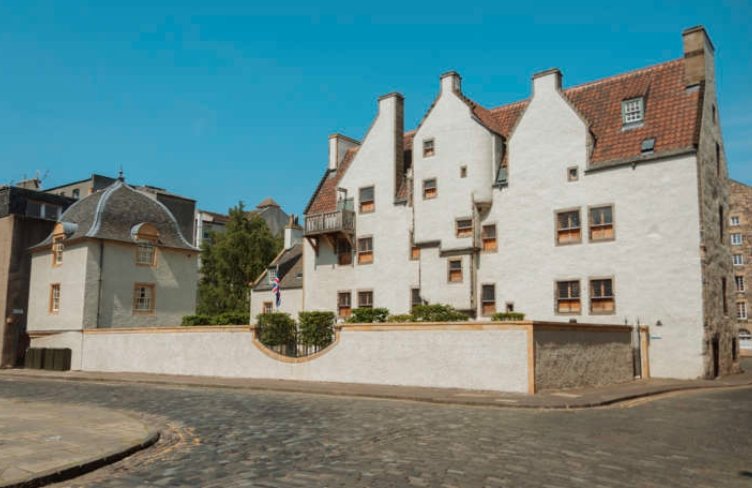EDINBURGH — In the heart of Leith’s historic harbor district, a stone-built time capsule from Scotland’s maritime golden age has been given a second life — and a price tag. Lamb’s House, one of the nation’s few surviving merchant homes from the early 1600s, is now on the market for £3.9 million ($5 million) after a meticulous restoration by its architect owners.
A Harbor Landmark with Royal Connections
Built in 1610, when Leith was a thriving, fortified port independent from Edinburgh, Lamb’s House stands as a rare example of the area’s once-flourishing trade architecture. Its crow-stepped gables, leaded windows, and thick stone walls speak of an era when merchant wealth shaped the skyline.
The home is named for Andro Lamb, a merchant whose family played host to Mary, Queen of Scots upon her arrival in Leith in 1561. Originally, the building contained six ground-floor shops and apartments above, serving the city’s elite traders.

From Decline to Preservation
Like many ancient buildings, Lamb’s House saw centuries of decline. By the mid-20th century, it teetered on the brink of ruin before being saved by a group of determined preservationists, including the Marquess of Bute and conservation architect Robert Hurd. Their efforts led to the property being gifted to the National Trust for Scotland.
Yet the structure still needed a champion to bring it back to its original splendor. That came in 2010, when conservation architects Nicholas Groves-Raines and Kristín Hannesdóttir acquired the property and began a five-year restoration.
Peeling Back Centuries of Change
The couple’s approach was both forensic and reverential. Modern, unsympathetic alterations were stripped away to reveal original Baltic pine beam ceilings and massive fireplaces — some nearly 10 feet wide. Every restoration decision aimed to uncover the house’s historic character without turning it into a museum piece.
They also expanded the footprint, adding a Renaissance-inspired pavilion and an extension that blended seamlessly with the original stonework.
A Garden Fit for the 1600s
Perhaps the most dramatic transformation happened outside. What was once a nondescript concrete yard is now a walled garden straight from a 17th-century design manual. Inspired by period parterre layouts, the space features:
-
Symmetrical quatrefoil flower beds
-
Hornbeam columns clipped into precise block shapes
-
Pastel roses and silver-toned foliage in a curated palette
-
High stone walls for both privacy and historical authenticity
It’s a private oasis that channels the ordered elegance of Renaissance horticulture.
Inside the Merchant’s House
The main house spans four floors, offering a mixture of grand entertaining rooms and intimate living spaces. Thick stone walls keep interiors cool in summer and warm in winter, while the restored beam ceilings give a rustic yet stately air.
Fireplaces dominate several rooms, evoking the house’s original function as both a residence and a commercial hub for Leith’s merchant class. Modern updates — including discreet heating systems and sympathetic lighting — ensure 21st-century comfort without sacrificing heritage.
A Rare Opportunity in Scotland’s Property Market
Historic properties of this caliber are seldom available in Edinburgh, especially in Leith, which has transformed from a gritty port to one of the capital’s most in-demand neighborhoods. The area’s Michelin-starred restaurants, artisan shops, and proximity to the waterfront have made it a magnet for both international buyers and heritage enthusiasts.
With its royal associations, painstaking restoration, and architectural integrity, Lamb’s House is more than just a home — it’s a piece of Scotland’s living history.


















